|
Sir William
Burrell / Wagner "Garden" rug, Isfahan, Kirman or Azerbaijan/NW Iran, 17th century
(Safavid Empire). Glasgow Museums (cotton and wool)
The Wagner Garden Carpet is one of the most
amazing garden carpets to have survived to the present. It was produced
during the Safavid period in 17th century Kirman, a well known
carpet-making city in south-eastern Iran. The layout of the carpet evokes
an image of the earthly paradise as inspired by both the ancient Iranian
‘chahar-bagh’ – four-quartered garden – and the description of Paradise in
the Quran. Water channels divide the walled garden, and meet at a central
pool. On the banks of the waterways trees, bushes and shrubs blossom and
bloom all at the same time; and animals (both predators and pray), birds
of all types, multi-coloured butterflies and moths inhabit the garden.
Fish and ducks populate the waterways, who’s shimmering waters are
cunningly illustrated by the drawing of a lattice pattern with varied
thicknesses of line and colour.
This carpet was purchased by Sir
William Burrell in 1939, and he donated it with his collection to the City
of Glasgow in 1944. It measures 5.31 m long and 4.32 m wide; and is made
up of cotton warps; wool, cotton and silk wefts; and wool pile. It
acquired its name ‘Wagner’ from a previous owner who acquired it at the
beginning of the 20th century.
Sir William Burrell’s prized 17th
century Persian “Wagner” Garden Carpet is believed to be the second
most important Iranian carpet in the UK after the Ardabil Carpet at the
V&A Museum.
|
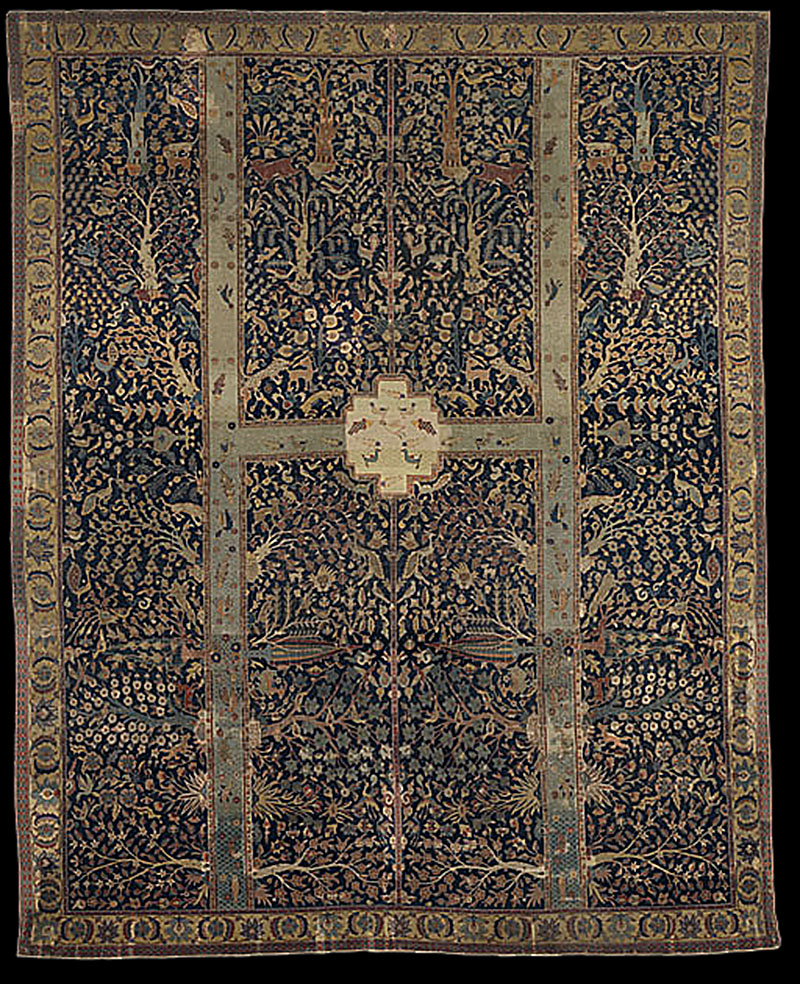
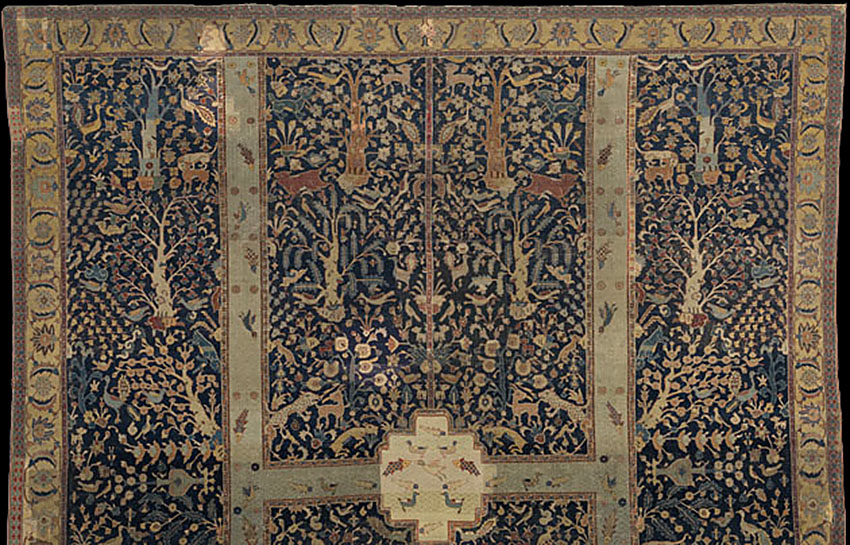

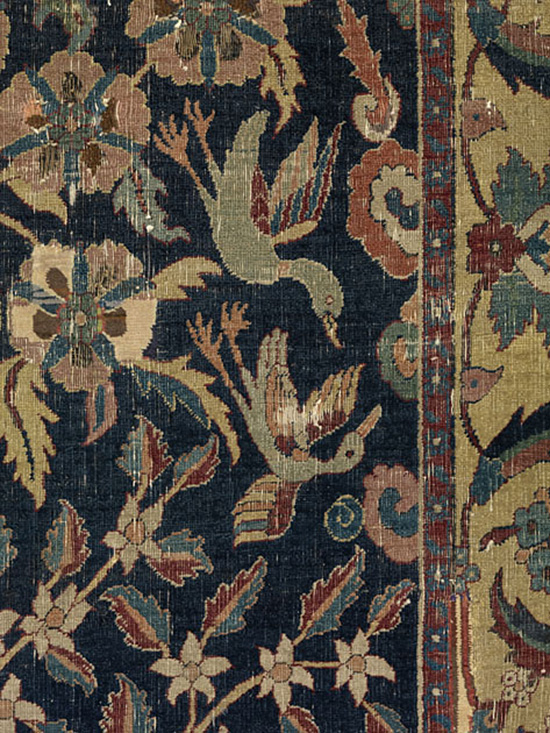
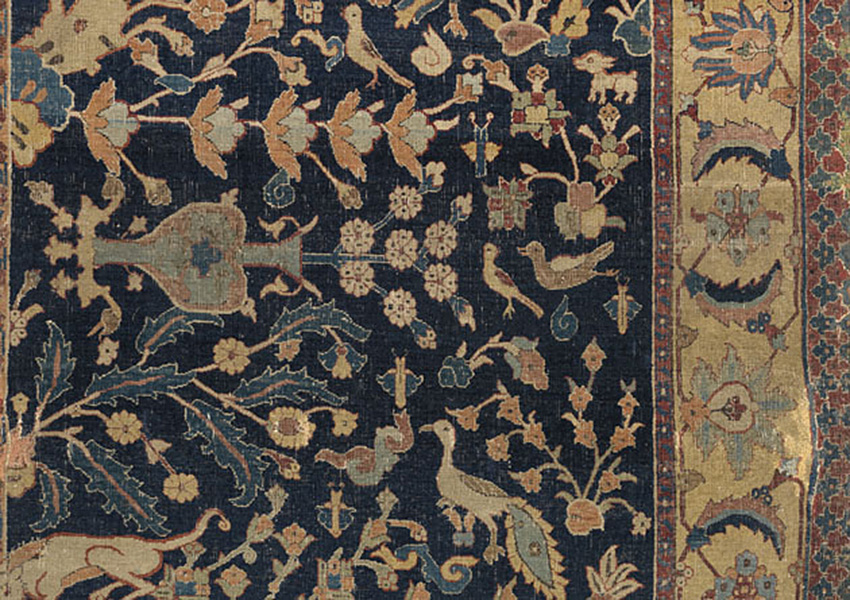
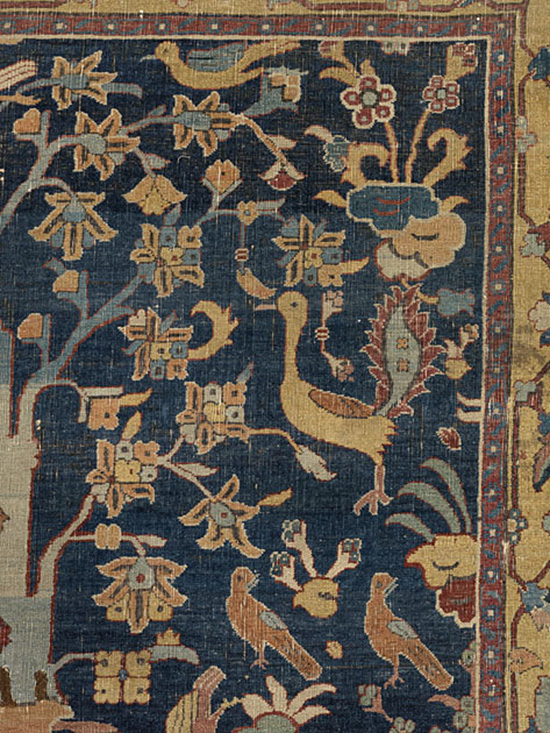
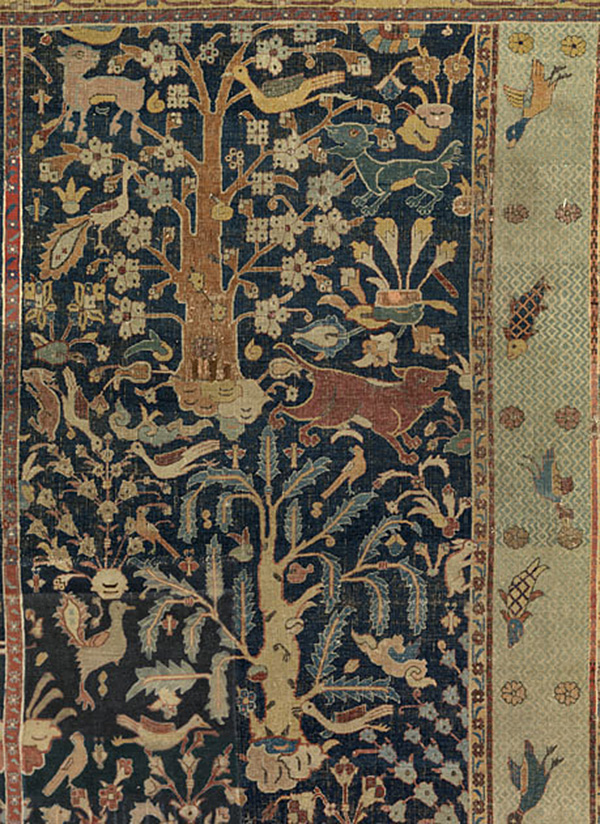
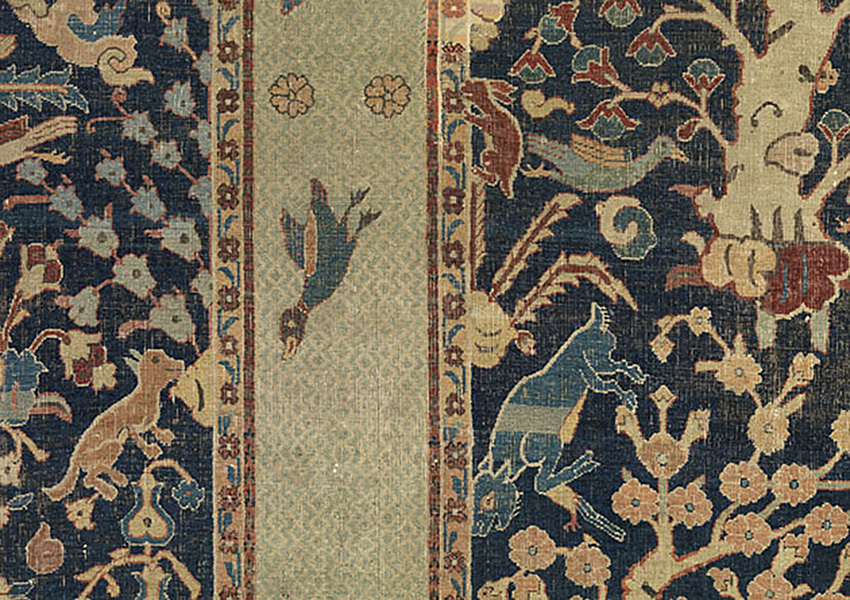
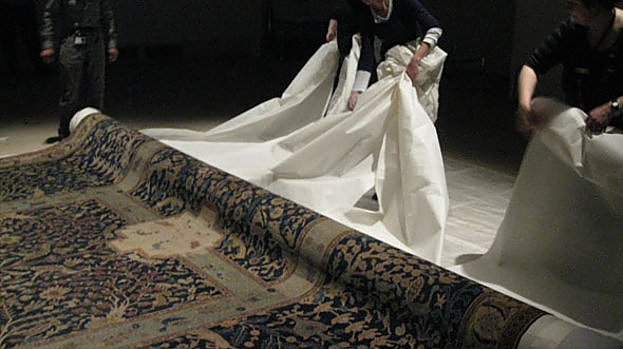
Due to its large size and condition, 5.5m x 4.3m , this Safavid carpet has
only been
displayed twice in the last 30 years. Believed to have been
made in Kerman/Kirman, or possibly
Isphahan, it has a woollen pile,
cotton warps, and wool and cotton wefts.
Named after a previous
German owner (Wagner), the carpet’s unique and beautiful design
is of
a four quartered garden divided by water channels that form the letter H,
with a water
basin in the centre of the short horizontal channel. The
garden is filled with images of
Cypress and flowering trees and
shrubs, and populated with an array of birds, animals and
several
types of fish and duck, floating on the water channels. Lions, leopards,
gazelles,
peacocks, storks and pigeons, roam the garden. The
symmetrical layout and bordered
water channels are not only
reminiscent of Safavid royal gardens in Isphahan, but also
resemble
descriptions of Gardens of Paradise in the Qur’an.
The Wagner
Garden Carpet is considered to be one of the three earliest surviving
Persian
garden carpets in the world, the other two being at the Jaipur
Museum and the Museum of
Industrial Art in Vienna. However, the design
of this particular carpet is unique, and no
other examples resembling
it or using part of its base-pattern have yet been identified . |









